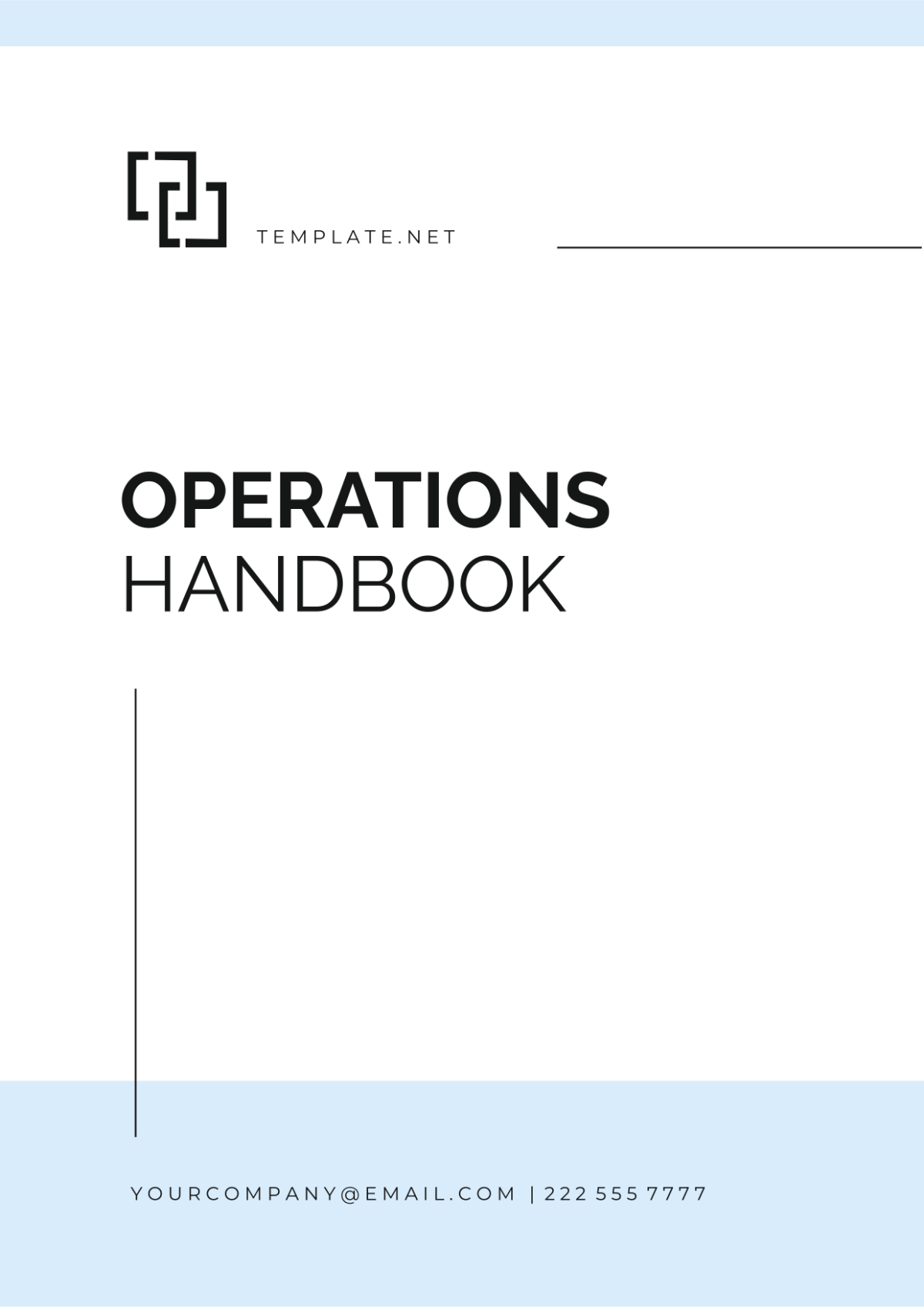Marketing Partnership Development Handbook
Welcome to the Marketing Partnership Development Handbook, your comprehensive guide to creating and managing successful marketing partnerships. In the dynamic world of marketing, partnerships are invaluable tools that can elevate our brand's reach, influence, and impact. When we collaborate with the right organizations, businesses, and individuals, we not only amplify our own success but also contribute to the growth of our partners.
Purpose of the Handbook
This handbook has been meticulously crafted to empower our marketing team with the knowledge and strategies necessary to establish and nurture successful marketing partnerships. These partnerships will serve as a cornerstone for our brand's expansion and evolution. By leveraging the insights and tactics presented in this handbook, we aim to transform our vision into reality.
Key Objectives
Our objectives in developing this handbook are as follows:
Understanding the Concept: Gain a deep understanding of the concept of marketing partnerships, from their definition to their immense potential.
Effective Partner Identification: Learn how to identify potential partners with precision, aligning with our brand's values and objectives.
Robust Partnership Strategy: Develop a comprehensive strategy that will serve as the foundation for our marketing partnerships, ensuring every collaboration is a success.
Successful Initiations: Master the art of initiating partnerships, from the initial outreach to negotiation and contract development.
Performance Optimization: Continuously measure and optimize the performance of our partnerships to maximize their benefits and long-term impact.
This handbook will be your guide to achieving these objectives and excelling in the realm of marketing partnerships. Let's embark on this journey to unlock new opportunities and drive mutual growth.
1. Understanding Partnership Development
1.1. Definition of Marketing Partnerships
A marketing partnership is a collaborative venture between two or more entities to achieve mutually beneficial goals. It involves combining resources, expertise, and audience reach to promote products, services, or causes.
1.2. Types of Marketing Partnerships
Strategic Alliances: Long-term partnerships with complementary businesses.
Influencer Partnerships: Collaborating with individuals or influencers to promote products.
Co-Branding: Partnering with another brand to create a joint product or campaign.
Affiliate Marketing: Partnering with affiliates to promote products and earn a commission on sales.
Cause Marketing: Partnering with nonprofits to support a shared social or environmental cause.
1.3. Benefits of Marketing Partnerships
Increased brand visibility and reach.
Access to new markets and customer bases.
Cost-effective marketing.
Enhanced credibility and trust.
Diversified product offerings.
Shared resources and expertise.
2. Identifying Potential Partners
Identifying potential partners is a critical step in the success of marketing partnerships. This phase involves a strategic blend of understanding our audience, conducting in-depth research, and evaluating compatibility.
2.1. Define Your Target Audience
Your ideal customer profile is at the heart of this process. To pinpoint the right partners, it's essential to gain a deep understanding of your customer demographics, behaviors, and interests. By doing so, you'll be better equipped to identify partners whose audience aligns with your own.
2.2. Research Potential Partners
Conducting meticulous research is paramount to identify partners who can complement your objectives. This research goes beyond just examining a potential partner's offerings. It includes a comprehensive analysis of their audience, core values, and marketing strategies. Understanding these aspects will not only inform your partnership decisions but also uncover opportunities for synergy.
2.3. Assess Compatibility
Compatibility is the cornerstone of a fruitful marketing partnership. Ensure that the potential partner shares your brand's values, mission, and goals. A partnership that resonates with your audience and aligns with your brand's essence is more likely to yield long-lasting and successful results. Compatibility enhances the authenticity and impact of your partnership, ultimately benefiting both parties.
3. Creating a Partnership Strategy
3.1. Define Your Goals
Set clear and measurable objectives for the partnership, such as increasing brand awareness, driving sales, or supporting a social cause.
3.2. Develop a Value Proposition
Define what each partner brings to the table and the unique value the partnership offers to the audience.
3.3. Set Key Performance Indicators (KPIs)
Establish KPIs to track and measure the success of the partnership.
3.4. Budgeting and Resource Allocation
Determine the financial and resource commitments required for the partnership.
4. Initiating the Partnership
4.1. Approach and Introduction
Your initial engagement with potential partners is a crucial step in establishing a successful marketing partnership. Here's how to navigate this phase effectively:
Research and Selection
Before reaching out, thoroughly research your potential partners to ensure they align with your objectives and target audience. Select partners whose values and goals resonate with your brand.
Personalized Outreach
Craft personalized, engaging communication that highlights the benefits of a partnership. Show a genuine interest in their organization and its mission. Your approach should be thoughtful and respectful.
Relationship Building
Building relationships is key. Consider networking events, mutual connections, or even a warm introduction to initiate contact. Leverage any existing connections to facilitate an introduction.
Gauge Interest
When reaching out, your primary aim is to gauge their interest in a potential partnership. Avoid making a full proposal at this stage, as you want to ensure that there is mutual interest before investing more time.
4.2. Proposal and Negotiation
After you've established mutual interest, it's time to dive deeper into the partnership. This phase involves creating a formal proposal and negotiating the terms of the partnership:
Comprehensive Proposal
Develop a compelling proposal that outlines the partnership's objectives, scope, and benefits for both parties. Clearly communicate the value you bring to the partnership and how it aligns with their goals.
Open Dialogue
Initiate open and transparent discussions with potential partners. Be receptive to their ideas, concerns, and suggestions. Effective communication is key to building a strong foundation.
Win-Win Negotiation
Negotiation should be focused on creating a win-win situation. Find common ground and ensure that both parties are satisfied with the terms. Flexibility and compromise may be necessary.
Document Everything
Throughout the negotiation process, document all agreements and changes to ensure clarity and avoid misunderstandings later on. This documentation will be invaluable when creating the partnership contract.
4.3. Legal Considerations
Ensuring legal compliance and airtight contracts is vital for a smooth and secure partnership:
Legal Expertise
Consult with legal experts who specialize in partnership agreements. Their knowledge and experience are essential in addressing any legal or compliance requirements specific to your partnership.
Due Diligence
Thoroughly review all legal aspects, including intellectual property rights, data protection, and any industry-specific regulations. Understand the legal implications and responsibilities of each party.
Compliance Assurance
Work with legal counsel to ensure that the partnership aligns with all applicable laws and regulations. Address potential risks and establish mitigation strategies.
Confidentiality and Data Protection
Develop a clear strategy for managing sensitive data and information sharing, ensuring that both parties are committed to safeguarding confidential information.
4.4. Contract Development
The final step in initiating the partnership involves creating a comprehensive and legally binding contract:
Professional Drafting
Engage experienced contract drafters to create a detailed contract that encompasses all aspects of the partnership. Ensure that it is clear, precise, and leaves no room for ambiguity.
Roles and Responsibilities
Outline the specific roles and responsibilities of each party within the partnership. Be explicit about what is expected from both sides.
Terms and Conditions
Specify the terms and conditions of the partnership, including the duration, termination clauses, and any contingencies.
Dispute Resolution
Include a dispute resolution mechanism to address potential conflicts and disagreements. Define how disputes will be resolved to maintain a harmonious partnership.
5. Managing and Measuring Partnerships
5.1. Partnership Execution
Execute the partnership according to the agreed-upon plan and strategy.
5.2. Metrics and Reporting
Regularly track and report on KPIs to measure the success of the partnership.
5.3. Ongoing Relationship Management
Nurture and maintain the relationship with partners to ensure the partnership's longevity and success.
Case Studies
Case Study: The Fitness Tech & Nutrition App Partnership
Background:
Two companies, FitTech Solutions and NutriWell, formed a marketing partnership to combine their expertise in fitness technology and nutrition services. FitTech Solutions was known for its cutting-edge fitness tracking devices and mobile app, while NutriWell offered a popular nutrition app with meal planning features.
Objective:
The primary goal of this partnership was to create a holistic health and wellness solution for users. FitTech Solutions wanted to enhance the value of their fitness tracking devices by providing nutrition guidance, while NutriWell aimed to expand its user base by offering integrated fitness tracking capabilities.
Strategy:
Integration: FitTech Solutions integrated NutriWell's nutrition app into their fitness tracking app. Users could access both fitness and nutrition features seamlessly.
Co-Branded Challenges: The companies jointly organized fitness and nutrition challenges for users. Participants earned rewards and discounts from both companies.
Shared Content: They created and shared blog posts, videos, and social media content highlighting the importance of a balanced approach to fitness and nutrition.
Results:
User Engagement: User engagement with both apps increased significantly as users embraced the holistic approach to health and wellness.
Customer Acquisition: NutriWell saw a 25% increase in new users, and FitTech Solutions gained a 15% increase in device sales.
Customer Retention: Churn rates decreased as users found more value in the integrated offering.
Lessons Learned:
This partnership's success was a result of aligning their products and messaging to cater to a shared target audience. By combining their strengths and offering a more comprehensive solution, both companies achieved growth and strengthened their brand image.
CONCLUSION
In summary, marketing partnerships represent dynamic vehicles for not only broadening our brand's horizons but also fostering collaborative growth. This handbook stands as a holistic compass, expertly charting the course through the realm of marketing partnerships, from the initial stages of identification to the intricacies of effective management and vigilant measurement. By adhering to these strategic directives, we stand to open the doors to fresh avenues of opportunity and to propel the triumph of our marketing partnerships into the stratosphere, ultimately elevating the collective success of our brand. With the right partnerships in place, we can go beyond the horizon of our solo efforts and collectively reach new heights.
Marketing Templates @ Template.net

















































